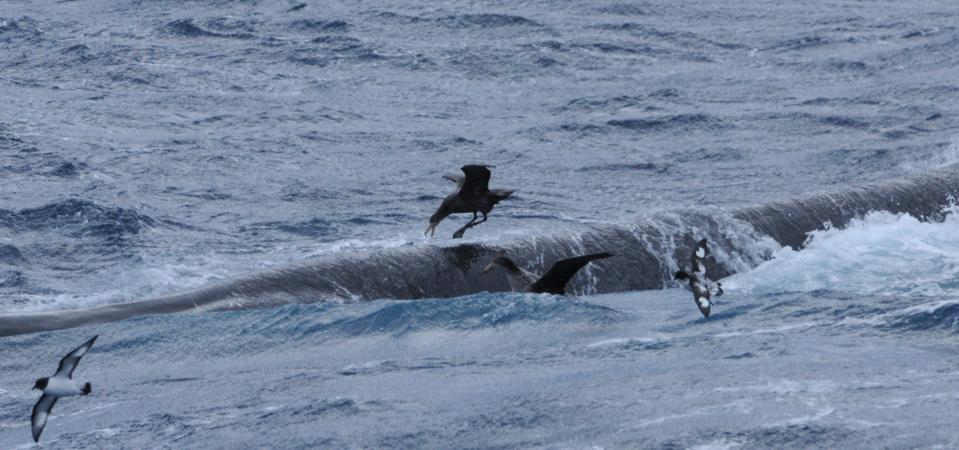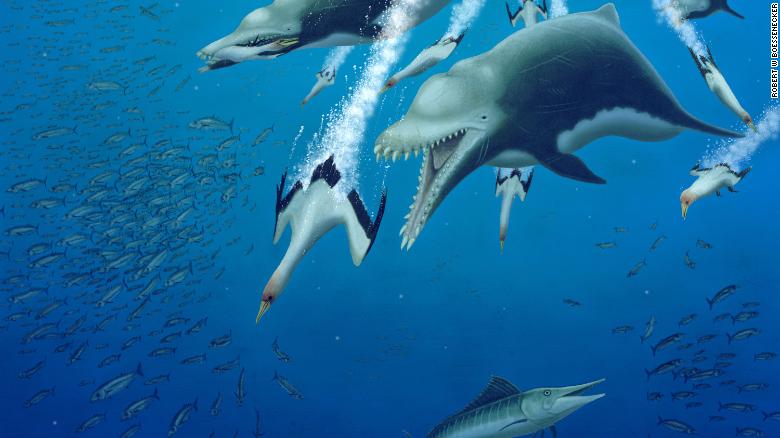Dolphins porpoise!
Our title does not have typo! Dolphins do porpoise! To porpoise (verb) means to swim forward quickly while rising in and out of the water; in most cases for dolphins when they porpoise, you will see part of their dorsal side with part of the head and dorsal fin in a very short amount of time. A number of pods, large and small, of Pacific White-Sided dolphins were observed with some porpoising.
A group of Transient Orca appeared in the early afternoon on July 13 between Van Anda (Texada Island) and Powell River. They travelled northward up Malaspina Strait and were last seen heading north past Savary Island. In 6 hours, these Orca covered approximately 30-km which gives you an idea of how much they can travel each day, and how much energy they need and use per day.
Many Humpback whales have made their presence felt, notably in upper Georgia Strait, lower Sutil Channel, and in Raza Passage. The Humpbacks displayed many different behaviours such as tail lobs, pectoral slaps, and breaches. If you look at the photos in our Humpback whale section, there are a few pictures showing each of these behaviours.
Boaters, please use caution on the water. Remember N.E.W.S. when you see a whale, meaning put your boat in NEUTRAL, ENJOY the view, WAIT till the whales are at a fair distance, and then SLOWLY leave the scene.
The Federal Government (DFO) has issued the following statement about watching whales in the wild: “To address disturbance in the presence of whales, a mandatory 400-metre vessel approach distance for all killer whales is in effect starting June 1, 2020 in all southern British Columbia coastal waters between Campbell River and just north of Ucluelet. The Marine Mammal Regulations continue to remain in effect year-round, including maintaining a minimum 200 metre approach distance from all killer whales in Canadian Pacific waters other than described above, and 100 metres for other whales, porpoises and dolphins OR 200 metres when the animal is in resting position or with a calf.”
WOWs works throught the year, so please continue to keep your eyes open, and report your sightings to us.
Archive Explorer navigates 21,000+ Cetacean Sightings, images, videos and audio recordings.
*Recommended for desktop browsers and newer mobile devices
Archive Explorer dives into the Coastal Cetacean world. View Cetacean sighting locations, photos and videos:
- All species including Orca, Humpback, Grey Whale or Dalls Porpoise
- Follow the endangered Southern Residents Orca in the Salish Sea
- Search for encounters with T002C2 Tumbo
- Witness a close-up Orca encounter video in Port Alberni harbour
- Follow the T010s Transients as they hunt and travel the inside passage
- Track "KC", the ever popular Humpback's movements
- Locate any of 12,000 named locations on the BC and WA State coast
- Print custom sighting reports and maps (Coming Soon)
Archive Explorer Help Page explains many advanced functions
Send your Comments and Questions to: Archive Explorer Feedback
COMING SOON: Our New Archive Dataset Interface is in the works, but we don't want to hold up any ongoing research.
To access 21,000+ sightings in our database to November issue #2019-049 in a downloadable csv file for use in a spreadsheet, please Click Here.
So, laying eyes on a white whale swimming next to its traditionally black family members should be even more rare. While it is uncommon to see, a researcher says Tl’uk, a white orca living near the waters off Vancouver Island, isn’t that hard to find….
read on
read on
read on
For decades, hungry kelp gulls off the east coast of South America have been known to rip chunks of blubber and skin out of the backs of southern right whales. Now researchers have documented a similar behavior in giant petrels in subantarctic waters, in which the birds land on the backs sperm whales and take bites out of their victims….
read on
read on
According to post-mortem examinations of the pygmy killer whales, which despite their name are actually a type of oceanic dolphin, most of them had serious infections in their liver, lungs, spleen, said Huang Hsiang-wen (é»?å?æ??), minister of the Ocean Conservation Administration. Experts also identified Klebsiella, a type of bacteria that can cause various infections, said Huang….
read on
Now researchers have confirmed that an ancient dolphin that lived during the Oligocene Epoch – 33.9 million to 23 million years ago – was the first cetacean (a type of mammal) using echolocation to navigate underwater and fill the role of apex predator, much like the current-day killer whale….
read on









